
Translated with an introduction by
Andrew George
THE EPIC OF GILGAMESH
The Babylonian Epic Poem and Other Texts in Akkadian and Sumerian
SECOND EDITION
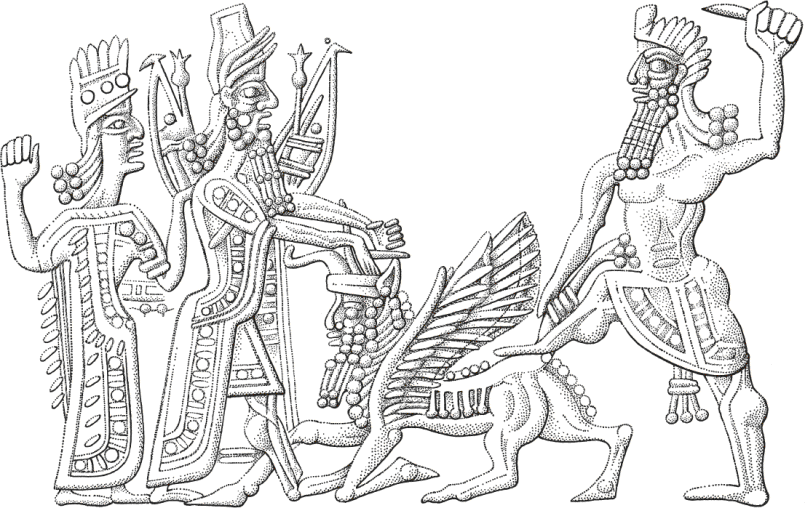

Contents
About the Author
The Epic of Gilgamesh is best known from a version called He who saw the Deep, which circulated in Babylonia and Assyria in the first millennium BC. The Babylonians believed this poem to have been the responsibility of a man called Sn-leqi-unninni, a learned scholar of Uruk whom modern scholars consider to have lived some time about 12001000 BC. However, we now know that He who saw the Deep is a revision of one or more earlier versions of the epic. The oldest surviving fragments of the epic are the work of an anonymous Babylonian poet who lived more than 3,700 years ago. The Babylonian epic was composed in Akkadian, but its literary origins lie in five Sumerian poems of even greater antiquity. The Sumerian texts gained their final form probably as court entertainments sung for King Shulgi of Ur of the Chaldees, who reigned in the twenty-first century BC.
ANDREW GEORGE was born in 1955 in Haslemere, Surrey. He was educated at Christs Hospital, Horsham, and the University of Birmingham, where he studied Assyriology. For a while he kept a public house in Darlaston. He began teaching Akkadian and Sumerian language and literature in 1983 at the University of Londons School of Oriental and African Studies, where he is now Professor of Babylonian. In 2006 he was elected Fellow of the British Academy, and in 2011 an Honorary Member of the American Oriental Society.
His research has taken him many times to Iraq to visit Babylon and other ancient sites, and to museums in Baghdad, Europe and North America to read the original clay tablets on which the scribes of ancient Iraq wrote. He has published extensively on Babylonian literature and religion.
PENGUIN

CLASSICS
THE EPIC OF GILGAMESH
Humankinds first literary achievement Gilgamesh should compel us as the well-spring of which we are inheritors Andrew George provides an excellent critical and historical introduction Paul Binding, Independent on Sunday
This volume will endure as one of the milestone markers [Andrew George] expertly and easily conducts his readers on a delightful and moving epic journey Samuel A. Meier, The Times Literary Supplement
Appealingly presented and very readably translated it still comes as an exhilarating surprise to find the actions and emotions of the Sumerian superhero coming to us with absolute immediacy over 30-odd centuries Scotsman
Andrew George has formed an English text from the best of the tablets, differentiating his complex sources but allowing the general reader a clear run at one of the first enduring stories ever told Peter Stothard, The Times
An exemplary combination of scholarship and lucidity very impressive invaluable as a convenient guide to all the different strands which came together to produce the work we now call Gilgamesh Alan Wall, Literary Review
List of Figures
Cuneiform text, seventh century BC , Ashur. The left third of the tablet is in the Vorderasiatisches Museum, Berlin (tablet VAT 9667); the right part, reconstructed from fifteen pieces, is in the Archaeological Museum, Istanbul (tablet A 122+123). Line drawing by the author.
Cuneiform text, late first millennium BC , Babylon. British Museum tablet fragment ME Rm 785+Rm 1017+34248+34357. Line drawing by the author.
Cuneiform text, late first millennium BC , Uruk. Oriental Institute Museum, University of Chicago, tablet fragment A 3444. Line drawing by the author.
The Sun God enthroned in his temple. Detail from the limestone tablet of King Nab-apla-iddina, ninth century BC , Sippar. British Museum ME 91000. Line drawing by Joanna Richards (after Tessa Rickards).
Cuneiform text, late first millennium BC , Babylonia. British Museum tablet fragment ME 93052. Line drawing by the author.
Gilgamesh and Enkidu slay Humbaba. Engraving on a bronze situla, early first millennium BC , Babylonia? Line drawing by Joanna Richards (after E. Strommenger-Nagel).
Gilgamesh and Enkidu despatch the Bull of Heaven with Ishtar looking on. Cylinder seal impression, early first millennium BC , Babylonia. British Museum seal ME 89435. Line drawing by Joanna Richards.
Ishtar, the goddess of sex and war, standing on a recumbent lion. Detail from cylinder seal impression, early first millennium BC , Assyria. British Museum seal ME 89769. Line drawing by Joanna Richards.
Cuneiform text, eighth century BC , Sultantepe, near Urfa. Museum of Anatolian Civilizations, Ankara, tablet SU 51/7. Line drawing by the author.
Scorpion-men. Detail of cylinder seal impression, early first millennium BC , Assyria. Line drawing by Joanna Richards.
Cuneiform text, third century BC , Babylon. British Museum tablet fragment ME Rm 751+34853+35546. Line drawing by the author.
Detail of wall relief from the North Palace at Nineveh, seventh century BC. British Museum slab ME 124931. Line drawing by Joanna Richards.
Detail from the limestone victory stele of Eannatum, an early ruler of Lagash, twenty-fifth century BC , Girsu. Muse du Louvre. Line drawing by Joanna Richards.
Gilgamesh and Enkidu slay Huwawa. Clay plaque, early second millennium BC , Babylonia. Vorderasiatisches Museum, Berlin, VA 7246. Line drawing by Joanna Richards.
Gilgamesh and Enkidu despatch the Bull of Heaven. Clay plaque, early second millennium BC , Babylonia. Vorderasiatisches Museum, Berlin. Line drawing by Joanna Richards.
Detail from a mosaic panel known as the Royal Standard, twenty-seventh century BC , Ur. British Museum, ME 121201. Line drawing by Joanna Richards.
Limestone plaque depicting wrestlers, middle of third millennium BC , Tutub. Iraq Museum, Baghdad. Line drawing by Joanna Richards.
Cuneiform text, fourteenththirteenth century BC , Nippur. Oriental Institute Museum, University of Chicago, tablet A 29934. Line drawing by the author.
Naked couple embracing. Clay plaque, early second millennium BC , Susa. Muse du Louvre. Line drawing by Joanna Richards.
Huwawa. Clay plaque, early second millennium BC , Babylonia. Muse du Louvre. Line drawing by Joanna Richards.
The Lion-Bird (Anz). Detail of carved stone relief, late third millennium BC , Girsu. Muse du Louvre. Line drawing by Joanna Richards (after Tessa Rickards).
Gilgamesh and Enkidu slay Huwawa amid the cedars. Composite of clay plaques from Larsa, early second millennium BC. Line drawing by Joanna Richards.
Detail of ivory panel of Phoenician workmanship depicting the Woman at the Window, thought to be a prostitute soliciting custom. First millennium BC , Assyria. British Museum, ME 118159. Line drawing by Joanna Richards.
The Sun God crossing the ocean at the end of the world. Detail of cylinder seal impression, late third millennium BC , Eshnunna. Line drawing by Joanna Richards (after Tessa Rickards).
Cuneiform text, early fourteenth century BC , Boazky. Museum of Anatolian Civilizations, Ankara, tablet fragment Bo 83/625. Line drawing by the author.
Next page
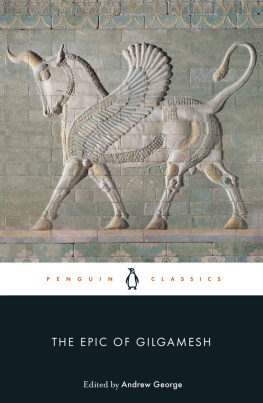

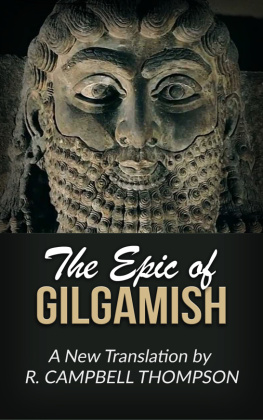
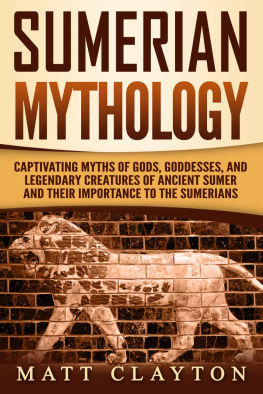
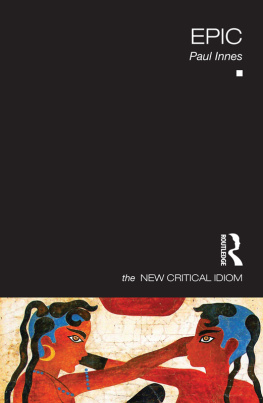
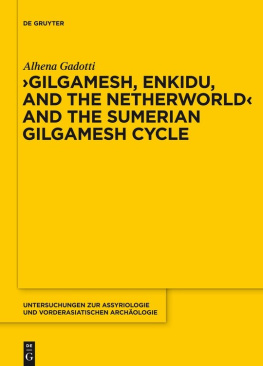
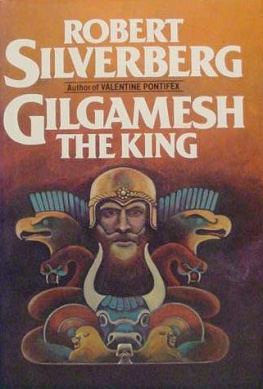



 CLASSICS
CLASSICS